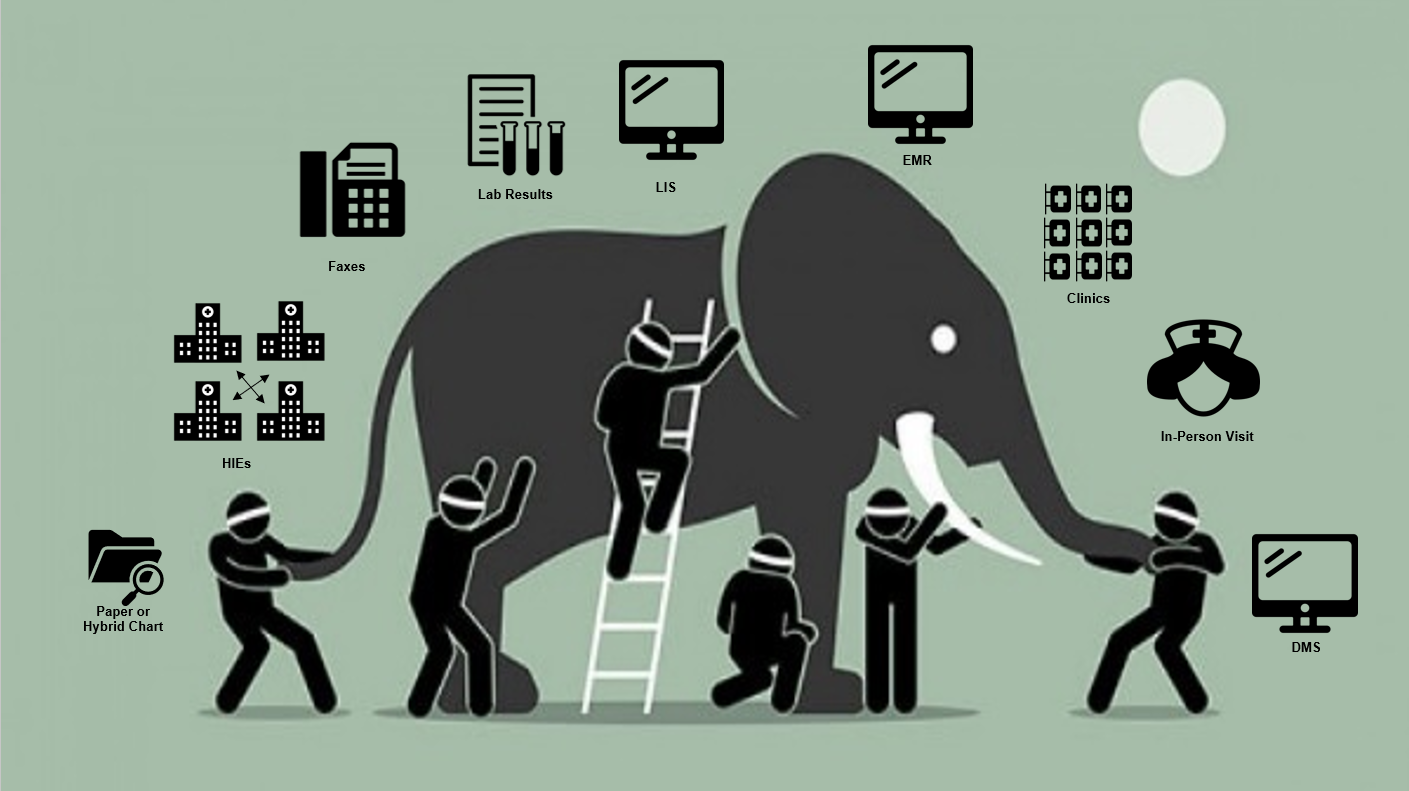
Blind Men and an Elephant…in Healthcare?
“Reality is one, though wise men speak of it variously.” The Rigveda. Understanding that the parable of the Blind Men and an Elephant has more profound and heavy meanings and interpretations, I will take the liberty of using it lightly as an apt analogy for healthcare data and patient care.
Imagine the elephant is current patient data for diagnosis or historical patient data for research. Without all the relevant data, the available data could convey an incomplete picture or even worse an incorrect picture.
Patient data comes from too many sources, none of which paints the whole picture. Physicians would not diagnose a patient based solely on data from faxes (yes, faxes are still prevalent in hospitals). Similarly, if physicians reviewed everything but faxed-in data, the most current and critical patient information could be missed.
It is unsettling to think of the many sources from which a physician receives relevant data. To complete the picture and be able to recognize the subject in its entirety (as an “elephant”), physicians might have to access information from…
…an EHR
…an HIE
…an LIS
…a DMS
…a paper or hybrid chart
…a fax
…a network MDF scan
…an in-person doctor’s visit
Obviously, an EHR is the primary and de facto source of easily accessible patient data and, ideally, is the single pane of glass; but it is only as relevant as the data that has been entered into it.
An HIE is helpful only if discrete data is being interfaced, but not if the deliverable is an image that must be opened to be viewed and does not provide discrete actionable data.
Similarly, LIS data is easily accessible and leveraged only if the data is interfaced to an EHR.
And a physician may be unaware of patient data that is trapped in a DMS. Not to mention, the data in scanned images cannot be presented to the physician as a flowchart with trended patient history to help with the diagnosis and treatment.
External sources like faxes, eFaxes, and network MDF scans take time to abstract into an EHR or LIS; or they take time to scan, upload, and index into an EHR. This then requires physicians to spend time opening the documents and looking for the data.
As it relates to paper documents, whether they are being routed on a cart, scanned at the point of care (concurrent scanning), or reside in a hybrid chart; the doctor cannot get a clear picture until all the patient documents have been scanned, classified, indexed, verified and released into an EHR.
Imagine the aforementioned elephant is now becoming agitated with six grown men hanging on it and poking it. The time it takes to get that clear and comprehensive picture becomes critical in order to react timely and appropriately.
What if all the Blind Men’s partial views were automatically “interfaced” and integrated so that the subject could be more quickly “diagnosed” as an agitated elephant and an effective remedy could be prescribed as soon as possible?
Well that is what Extract Systems’ on-premise HealthyData platform provides. Regardless of the source or format, patient care documents are delivered to the Extract server and processed. They are automatically separated, classified, indexed, abstracted, and redacted. The extracted data is “interfaced” to discrete fields in the EMR where it becomes actionable, and the indexed image is routed to the DMS.
Research, registry, population health, and other data analytics departments can access and leverage historical patient data trapped in non-interfaced documents residing in a DMS. These documents are exported to the Extract server where the patient data is extracted or “liberated” and mapped to any destination database system. If the targeted documents are buried in large charts in the DMS, the entire chart can be exported to Extract and the specific documents can be identified, separated, and then abstracted.
So, don’t get trampled by an elephant. Call Extract Systems today!



